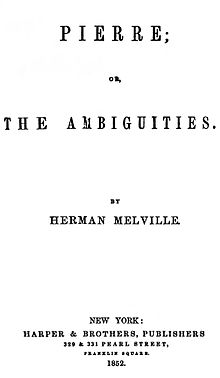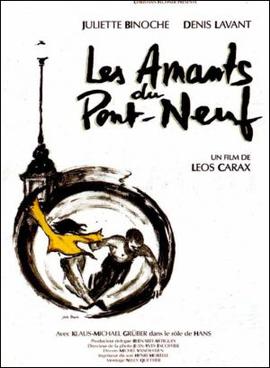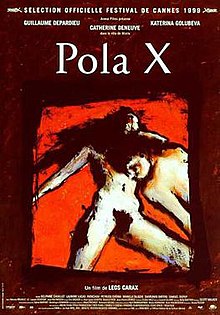 PIERRE; OR, THE AMBIGUITIES by Herman Melville was published in 1852. It was Melville’s follow up to MOBY DICK (1851), which received mixed reviews upon its initial publication but has gone on to become an immortal classic—a status the hotly contested PIERRE; OR, THE AMBIGUITIES has not achieved.
PIERRE; OR, THE AMBIGUITIES by Herman Melville was published in 1852. It was Melville’s follow up to MOBY DICK (1851), which received mixed reviews upon its initial publication but has gone on to become an immortal classic—a status the hotly contested PIERRE; OR, THE AMBIGUITIES has not achieved.
It was written, allegedly, in a passionate frenzy, and emerged as the wildest product of an author who turned out quite a few outré narratives in his day (including the proto-Kafka pastiche “Bartleby, the Scrivener” and the highly experimental novel THE CONFIDENCE MAN: HIS MASQUERADE). Related in prose that’s highly discordant and experimental, a tone that wavers between portentous solemnity and Victorian outrage, and a form that shifts from Biblical sonnets to 19th Century pulp, PIERRE; OR, THE AMBIUITIES is, in short, far from an easy read.
Its major subjects are incest, madness and, of course, ambiguity (a word that pops up throughout the text), all experienced by the title character, a young writer living in alarmingly close quarters with his widowed mother (who refers to him as “my brother”) in Upstate New York. Pierre is set to marry the sweet and undemanding Lucy, until his life is thrown into turmoil when he learns of the existence of a half-sister named Isabelle.
Pierre elects to run off with Isabelle. His instincts are initially pure—he seeks to legitimize her existence and restore his late father’s good name—but an unnatural desire for his half-sister comes to dominate his psyche. This hastens his decent into poverty and insanity, with Pierre, following an elaborate mythologically-inspired hallucination, opting to murder his asshole cousin Glen (with whom he previously shared yet another overly intimate connection), who has run off with Lucy. There follows a stunningly bleak conclusion that offers a deeply warped variant on that of ROMEO AND JULIET.
It shouldn’t surprise anyone that it took nearly 150 years for this nutty narrative to be adapted for film (as opposed to MOBY DICK and “Bartleby,” which have inspired multiple big and small screen transpositions), or that the adaptor was France’s fiercely iconoclastic Leos Carax. Long dubbed the “enfant terrible” of French cinema, Carax (who recently confounded audiences with the controversial ANNETTE) made his mark as a young man with the irrepressible movie-mad features BOY MEETS GIRL (1984) and BAD BLOOD/MAUVAIS SANG (1986). That winning streak was broken by 1991’s LOVERS ON THE BRIDGE/LES AMANTS DU PONT NEUFF, in its day the most expensive French film ever made, and a massive flop.
LOVERS ON THE BRIDGE was supposed to be a freewheeling romance, yet it feels excessively labored and protracted. That was due no doubt to its bloated and setback-filled production, in which Carax was denied permission to film on the eponymous Pont Neuff bridge, leading to a replica being constructed on a soundstage, together with the surrounding buildings. Carax cast his then girlfriend Juliette Binoche as a rich gal who falls for a homeless drifter (Carax’s favorite actor Denis Lavant) in a drama that takes the society-bashing gist that infuses the entirety of Carax’s output to an unheard-of extreme.
doubt to its bloated and setback-filled production, in which Carax was denied permission to film on the eponymous Pont Neuff bridge, leading to a replica being constructed on a soundstage, together with the surrounding buildings. Carax cast his then girlfriend Juliette Binoche as a rich gal who falls for a homeless drifter (Carax’s favorite actor Denis Lavant) in a drama that takes the society-bashing gist that infuses the entirety of Carax’s output to an unheard-of extreme.
In the course of the film the protagonists engage in acts of thievery, arson and even murder, all of which are justified (it’s implied) because they were committed against a corrupt and dehumanizing society. Yet the Paris depicted in this film is, conversely, among the most ravishing you’ll ever see. That duality mirrors the film’s freewheeling-yet-labored gist, and, I’d argue, makes for an interesting failure.
LOVERS ON THE BRIDGE directly anticipates POLA X (1999), which arrived nearly a full decade later. The previous film’s failure had a not-inconsiderable effect on the careers of its makers (Binoche invariably bursts into tears whenever LOVERS ON THE BRIDGE is mentioned by interviewers), Carax in particular. His response? A follow-up that functioned as a thematic remake.
While POLA X is a fairly straight transposition of Melville’s novel (“POLA” being an acronym for PIERRE; OR, THE AMBIGUITIES’ French title PIERRE; OU, LES AMBIGUIT, with the “X” signifying that Carax’s script went through ten drafts), it contains nearly all the elements of LOVERS ON THE BRIDGE: an outlaw romance conducted in a gritty-yet-magical setting on the fringes of Paris, a great deal of pretty scenery, mayhem and murder. Guillaume Depardieu (the late son of French film legend Gerard Depardieu) delivers an extremely brooding take on Pierre, and the late Yekaterina Golubeva, Carax’s then girlfriend, incarnates Isabelle.
 The film was nearly as calamitous as LOVERS ON THE BRIDGE, with a worldwide gross of just $791,919 against an $11 million budget—and no wonder: it’s dark, ugly and off-putting, in keeping the Melville text. Carax’s major addition is, aside from the modernized setting (with visible, though little-utilized, cell phones), a four minute sex scene between Depardieu and Golubeva that makes explicit what Melville only hinted at, and gleefully crosses the line into hard core territory. Non-simulated sex was something of a constant in French cinema of the late nineties (see ROMANCE, HUMANITE, etc.), and was central to the film’s publicity campaign (in the United States in particular). That may be a primary reason POLA X crashed with audiences; a measly four minutes of hardcore sex isn’t enough to liven up an otherwise relentlessly dour 134 minutes.
The film was nearly as calamitous as LOVERS ON THE BRIDGE, with a worldwide gross of just $791,919 against an $11 million budget—and no wonder: it’s dark, ugly and off-putting, in keeping the Melville text. Carax’s major addition is, aside from the modernized setting (with visible, though little-utilized, cell phones), a four minute sex scene between Depardieu and Golubeva that makes explicit what Melville only hinted at, and gleefully crosses the line into hard core territory. Non-simulated sex was something of a constant in French cinema of the late nineties (see ROMANCE, HUMANITE, etc.), and was central to the film’s publicity campaign (in the United States in particular). That may be a primary reason POLA X crashed with audiences; a measly four minutes of hardcore sex isn’t enough to liven up an otherwise relentlessly dour 134 minutes.
While on the subject of the film’s runtime: an extended three-part version of POLA X was shown on September 24, 2001, on France’s Arte TV. Miniseries versions of films have been staples of world cinema since the 1970s (when Ingmar Bergman was known to partake in the practice), and have continued into the present day (with the four hour Netflix cut of THE HATEFUL EIGHT). Such conflations functioned, variously, as correctives to a film’s release version (the late Robert Altman, whenever he was asked about 1990’s VINCENT AND THEO, always made sure to plug the four hour miniseries cut), or a way to keep a neglected film in the public eye (which was the case with POLA X, about which Carax stated that “it is not an ‘extended version’ or a ‘final version’ of the film…but a different proposition for television”).
In some cases the miniseries rethink has functioned as an improvement on a film’s release version—as with Emir Kusturica’s TIME OF THE GYPSIES, a film whose sprawling aesthetic proved well suited to the miniseries format–but that wasn’t usually the case. The VINCENT AND THEO miniseries completely misses the dreamlike aura of the feature film, and the four part Netflix version of HATEFUL EIGHT is not appreciably better or worse than its feature film counterpart, merely longer.
POLA X’s miniseries cut, titled PIERRE: OU, LE AMBIGUIT, falls into the latter category. Opening with a portrait of Herman Melville, it adds roughly 50 minutes’ worth of footage, which mostly takes the form of lengthened scenes (the sex scene runs about 20 seconds longer) and better-left-on-the-cutting room floor elements (such as an interminable karaoke rendition performed in a bar by Depardieu). In fairness, there are some interesting elements to be found in the miniseries, most notably a couple of bizarre dream sequences that enhance the delirious atmosphere, but overall I’d opine that the PIERRE; OU, LES AMBIGUIT mini is not needed. POLA X, on the other hand, gets a qualified recommendation.
